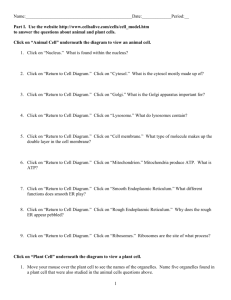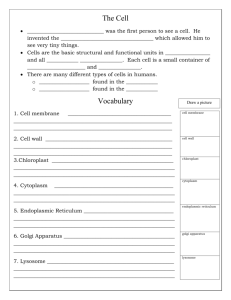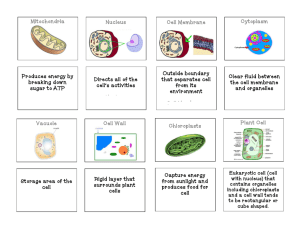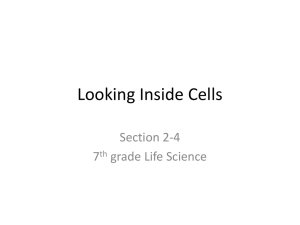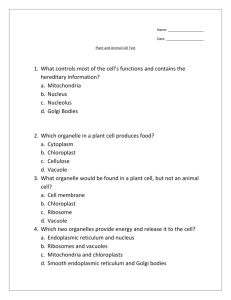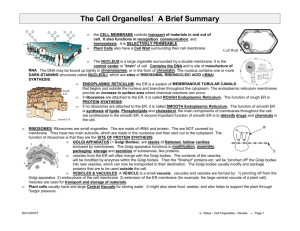Cells Library Quest
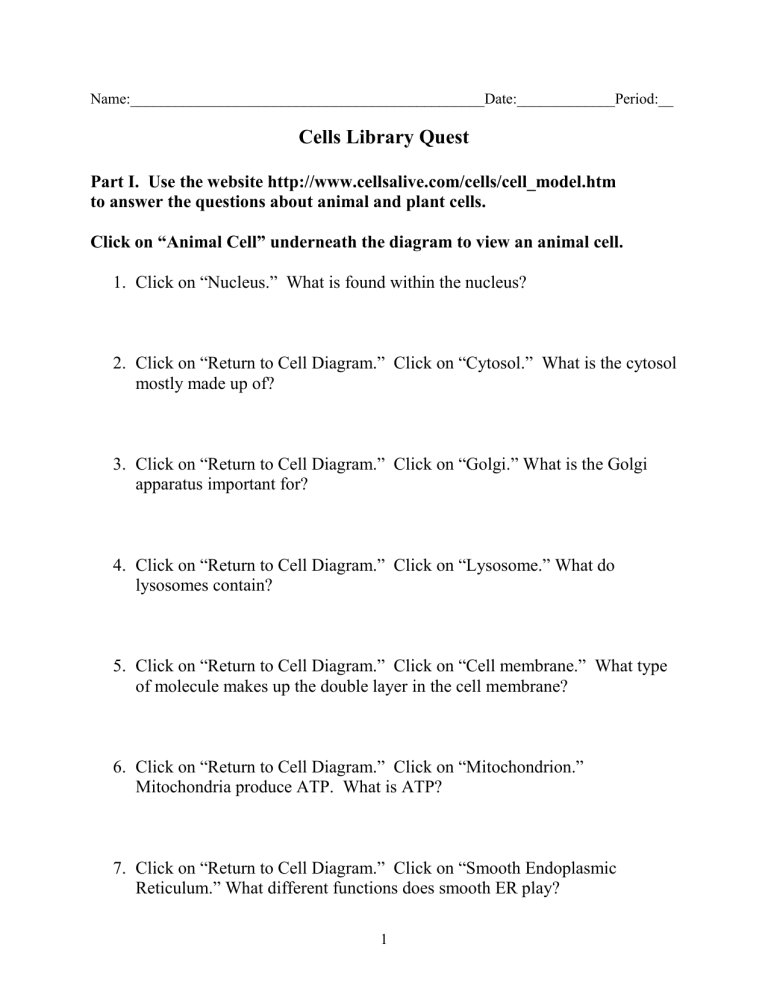
Name:_______________________________________________Date:_____________Period:__
Cells Library Quest
Part I. Use the website http://www.cellsalive.com/cells/cell_model.htm to answer the questions about animal and plant cells.
Click on “Animal Cell” underneath the diagram to view an animal cell.
1.
Click on “Nucleus.” What is found within the nucleus?
2.
Click on “Return to Cell Diagram.” Click on “Cytosol.” What is the cytosol mostly made up of?
3.
Click on “Return to Cell Diagram.” Click on “Golgi.” What is the Golgi apparatus important for?
4.
Click on “Return to Cell Diagram.” Click on “Lysosome.” What do lysosomes contain?
5.
Click on “Return to Cell Diagram.” Click on “Cell membrane.” What type of molecule makes up the double layer in the cell membrane?
6.
Click on “Return to Cell Diagram.” Click on “Mitochondrion.”
Mitochondria produce ATP. What is ATP?
7.
Click on “Return to Cell Diagram.” Click on “Smooth Endoplasmic
Reticulum.” What different functions does smooth ER play?
1
8.
Click on “Return to Cell Diagram.” Click on “Rough Endoplasmic
Reticulum.” Why does the rough ER appear pebbled?
9.
Click on “Return to Cell Diagram.” Click on “Ribosomes.” Ribosomes are the site of what process?
Click on “Plant Cell” underneath the diagram to view a plant cell.
1.
Move your mouse over the plant cell to see the names of the organelles.
Name five organelles found in a plant cell that were also studied in the animal cells questions above.
2.
What two organelles are found in the plant cell that you did not see in the animal cell?
3.
Click on “Cell Wall.” What molecule makes up cell walls?
4.
Click on “Return to Cell Diagram.” Click on “Chloroplast.” What substance inside the chloroplast makes it green?
2
Part II. Use a reference book to help you label the following cells and find the function of the following organelles. Then, compare each organelle to an everyday object and explain why they are similar.
Animal Cell
1.
____________________
2.
___Centrioles_________
3.
____________________
4.
____________________
5.
____Nucleolus________
6.
____________________
7.
____________________
8.
___Cilia______________
9.
____________________
10.
____________________
11.
____Cytoskeleton______
12.
7
___Golgi vesicles______
13.
____________________
14.
____________________
3
Plant Cell
A. ____________________
B. _Skip________________
C. _Skip________________
D. _Skip________________
E. ____________________
F. _Skip________________
G. ____________________
H. _Skip________________
I. ____________________
J. ____________________
K. ____________________
L. ____________________
M. __Golgi vesicle________
N. ____________________
4
Organelle
Nucleus
Cell Membrane
Endoplasmic
Reticulum
Golgi Body
Ribosomes
Mitochondria
Lysosome
Cytoplasm
Vacuole
Chloroplast
Cell Wall
Job Compare to an everyday object
(Use a complete sentence. Follow the example.)
A nucleus is like a _____________ because
5
